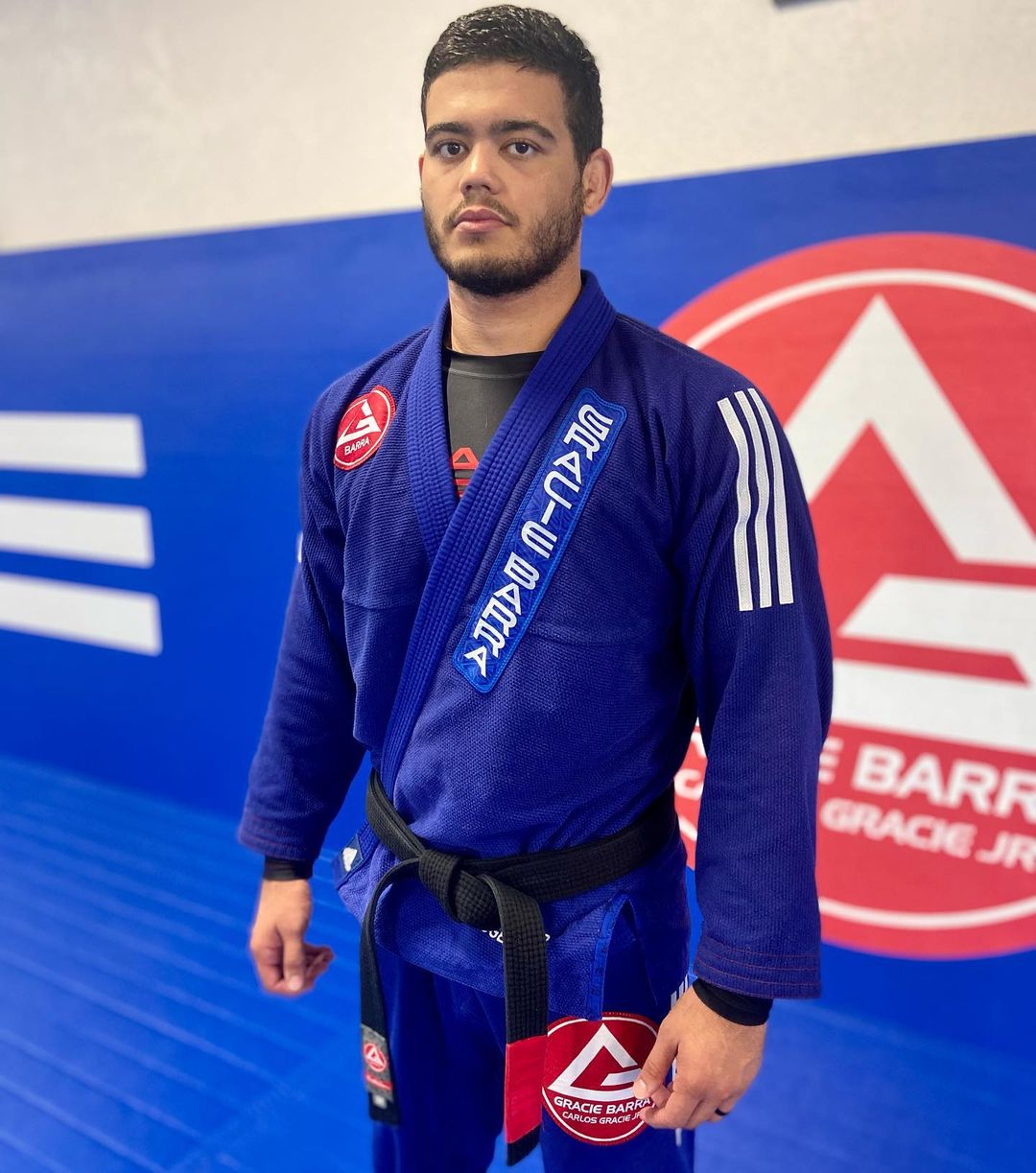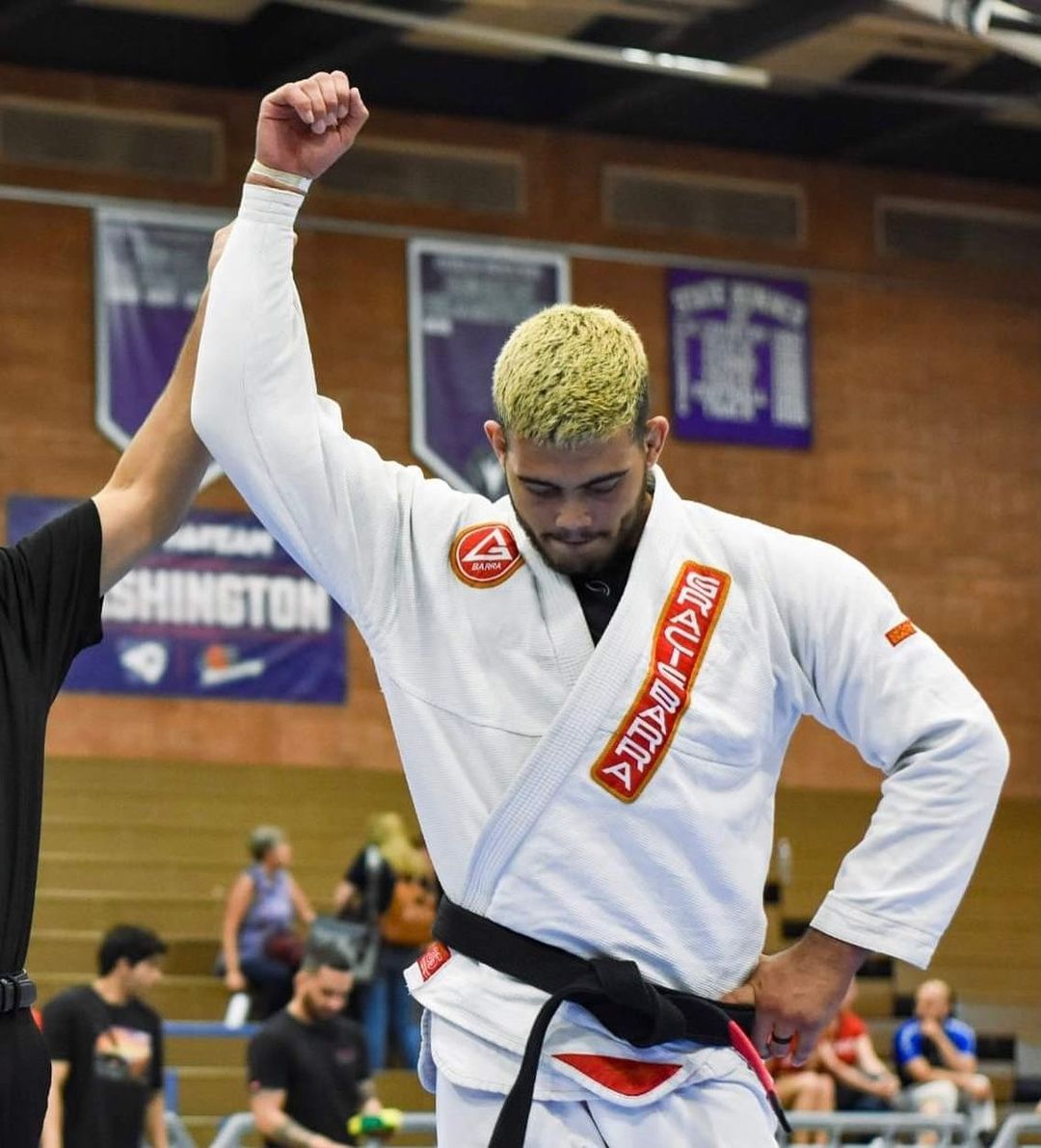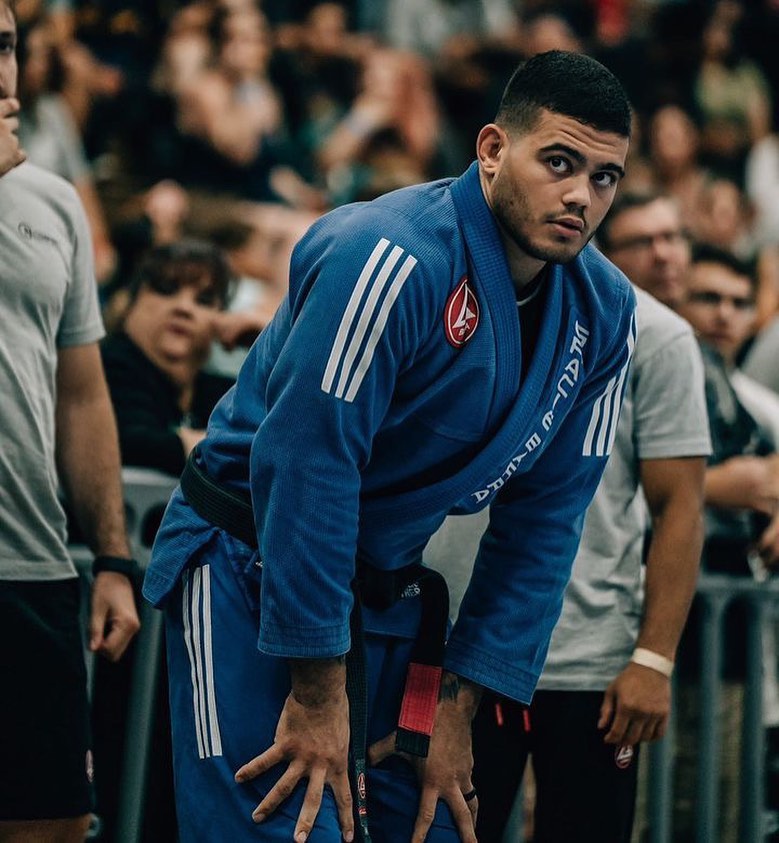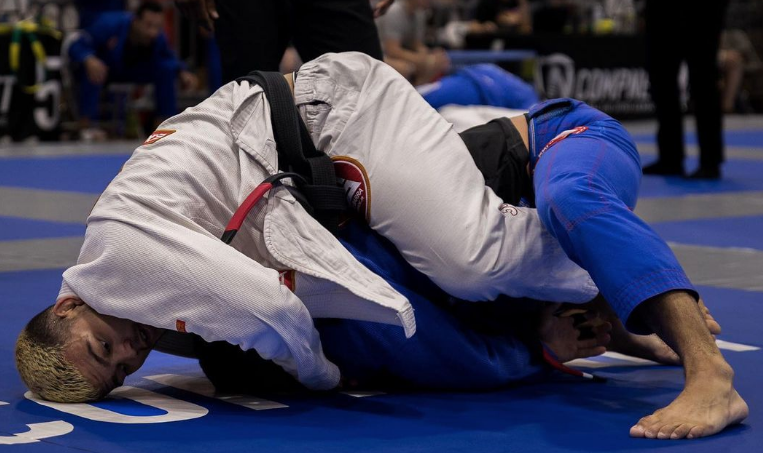The New Ultimate Position: Back Attacks From Top Game in Jiu-Jitsu

Professor Lucas Norat is a Gracie Barra black belt who is an IBJJF-ranked competitor in the Super Heavyweight division. Professor Norat is unusual for a Super Heavyweight in that his back-taking style – attacking with the Berimbolo, for example – is something you might expect to see from a lighter competitor but not often seen among Heavyweights.
GB Online will be featuring Professor Norat’s back attacks from the top game in the coming weeks, and GB talked with Professor Norat about his competitive history and the unique back attack system that he has developed.

Starting training in Gracie Barra Jiu-Jitsu
Professor Norat began his Jiu-Jitsu training with his father, a black belt who had trained in the 90s.
“I wanted to get closer to my dad and do everything that he did. So he did Jiu-Jitsu, and I wanted to do martial arts. I started doing boxing and Muay Thai. Around that same time, I started getting bullied at school. I wanted to do something to protect myself from the bully.”
Around the age of thirteen, Professor Norat was spending his winter break from school with his father in Brazil. He had a threat that the school bully was planning to beat him up when he returned from his winter break, and this motivated him to train in Jiu-Jitsu.
“So I asked him to start coming to class at his school. From the first time, I felt that there was something that I was able to be good at. I was very bad at sports growing up. I was a fat kid. Uncoordinated. So this was something for me that was like… maybe I can figure this thing out.” says Professor Norat.
Professor Norat jumped into training twice a day. When the winter break was over, He returned to school anticipating a confrontation with the bully, but it was anticlimactic as the bully no longer wanted to pursue the fight. However, Professor Norat’s passion for training Jiu-Jitsu was ignited.
Professor Norat was fortunate to meet Professor Joelson Souza, who was teaching at Gracie Barra Jacarepaguá (a suburb of Rio de Janeiro). When the school’s schedule changed, Professor Norat switched to another Gracie Barra location under Professor Villeem Coelho.
At present, Professor Norat is a competitive Jiu-Jitsu athlete training out of GB East Mesa in Arizona.

Competition history
In his weight class, Professor Norat is ranked in the top 10 in the world by the IBJJF. He alternates between Heavy and Super Heavy.
2014 – IBJJF Brazilian National, South American championships, Rio State Championships at Blue belt
High placings at several IBJJF Open events, Abu Dhabi Grand Slam, No-Gi Brazilian Nationals
In 2020 as a brown belt, Professor Norat won the American National championship at both gi and No-gi. The 2021 season saw him win a few IBJJF Open events – Phoenix Open, Chicago Open, Charleston Open, and wins at Fight To Win and Third Coast Grappling.
At the end of 2021, Professor Norat finished ranked 6th in the world in the Super Heavyweight class. He won the prestigious IBJJF Los Angeles Open.
Professor Norat received his black belt under Professor Flavio Almeida in January of 2021.
Competition at the black belt level
Professor Norat sees differences between competing in the Black Belt division and the lower belt divisions.
The fighters are more experienced, and he says that he had to learn to be more strategic in his matches and avoid making mistakes.
“Sometimes people don’t lose positions. If you make a mistake at black belt, you cannot make it back in the scoring. If you make a mistake, it might be over.” says Professor Norat.
“I’m learning how to fight more strategically without fighting with fear. Without fighting not to lose but fighting to win. But still not making reckless mistakes. That was the main thing.”

Professor Norat admits that it is an added dimension to the competition experience to face well-known Jiu-Jitsu competitors. “Also, having to fight people that you grew up watching. You were looking up to them, now you have to fight them. It took a few tournaments for me to feel that I really belonged in the division.”
Attacking the back from the top position
Professor Lucas Norat has filmed a series of Instructional videos for GB Online with a focus on back attacks and taking the back from the top position.
He explains that the approach in this video course is a little different than what Jiu-Jitsu fans might have seen before.
“I feel that it’s important because often we are focused on textbook guard passing. The guy is on the bottom playing guard, and I’m on top just trying to pass the guard and get to side control.”
This is a sound strategy in Jiu-Jitsu, but Norat offers more offensive opportunities in the guard pass. Instead of simply focusing on the one strategy of passing the guard to side control, Professor Norat urges Gracie Barra Jiu-Jitsu students to explore the other possibilities for taking the back during the guard pass.
“There is much more to explore than if you just focus on one thing; you are missing out on amazing opportunities to score the back take or sometimes even a submission coming from a scramble from taking the back,” says Professor Norat.
Professor Norat points out that a few high-level competitors employ this strategy, Felipe Pena, Gordon Ryan, and Andre Galvao, but it is largely neglected by many Jiu-Jitsu fighters.
Professor Norat feels this strategy may even be more effective than the orthodox pass-to-side control due to the element of unfamiliarity. The opponent just is not expecting to have their back exposed and taken.
Professor Norat shares that his style of Jiu-Jitsu is not what people typically expect from a heavyweight. He does not play the orthodox “big guy Jiu-Jitsu'” of heavy top pressure and smashing the opponent. He enjoys using many positions commonly thought of as a smaller person’s style. Speed passing, Berimbolo, and dynamic attacks from the back.
The importance of the back mount in competition
Professor Norat sees the ability to get to the opponent’s back as possibly the most effective strategy to win in a competition. In the traditional Jiu-Jitsu fight strategy, passing the guard and progressing to mount was seen as the primary way to win. But Jiu-Jitsu competitors have adapted, and strategies have evolved. They learned to defend better and counter the traditional strategy.
“The goal was to go to the mount. But as Jiu-Jitsu evolved, people had such a hard time maintaining mount. First, passing guard and then getting to mount. With the level of the guards, it became much harder to pass the guard, then after you pass to get to mount without the guy recovering the guard, and then after that, it became much harder to maintain mount after you got it,” Professor Norat explains.

“A lot of people, when their guard is passed, turn their backs. So usually, that is the direction that people go, and the back ends up being the position that wins fights, points, or even submissions. Usually, when you pass, people turn into you or away from you, and then you get the back. Or you take the back from the top position like I teach in my Instructional.”
“The back is the new ultimate position.“
Professor Norat emphasizes just how dominant the back position is. “On the back, staying tight, you have a lot of opportunities to attack the neck and the limbs. You have more control from the back than from the mount most of the time. And a lot of submission opportunities from there. But the main point is that the back is the main position that you end up getting the most. From a guard pass or from a scramble from the top.”
Professor Norat feels his approach to attacking the back is relatively unique. He explains that while he feels that he often has a strength advantage over most people, he lacks advanced flexibility. He cannot rely on matching his opponent’s speed in scrambles from the back that take place very quickly. Professor Norat adapted his back mount to be able to use his legs and hips to control the opponent’s ability to move and escape.
“How to use your legs and your hips to take control over your opponent’s hips. And not rely on flexibility that much,” says Professor Norat.
Big guy Berimbolo
Professor Norat feels that big guys can also use some positions that are often seen as only for lighter Jiu-jitsu fighters – like the Berimbolo.
“A lot of Berimbolo and back take instructionals these days, a heavyweight guy is going to look and think: man, I’m not going to be able to do that. That’s not how my body is. I’m not that flexible. But if I can do it, anybody can do it.” Professor Norat says.
For example, he thinks that many Gracie Barra Jiu-Jitsu students might shy away from using the Berimbolo because they feel that the position might not be for them.
“But if they see a heavyweight guy doing the moves, in a way that they can do as well, they can relate to it.”
“The system that I use does not rely on flexibility as much. It relies more on pressure, a focus on proper hip pinning, and hip control. It takes away the mystique of the Berimbolo and the back. It brings down to something that everyday students can use.”
To watch Professor Lucas Norat’s instructional, log in to your GB Online account or subscribe by clicking here. Lucas Norat’s GB Online Exclusive instructional will be available on November 22, 2022.
Blog written by Mark Mullen, a Gracie Barra Black Belt.
